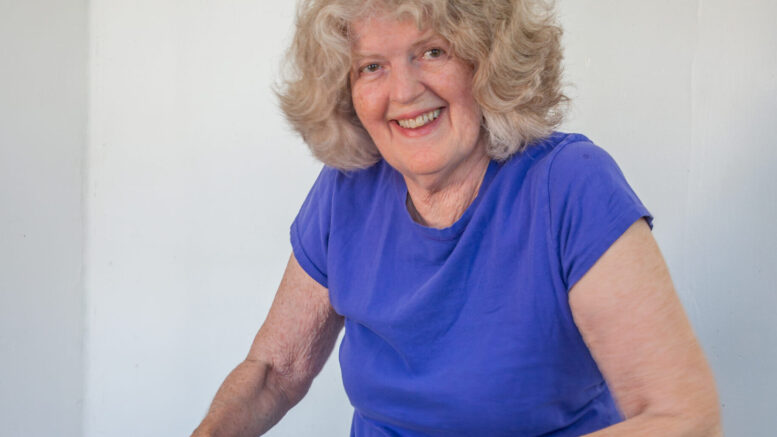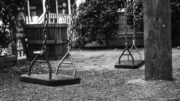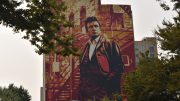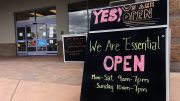One of Sacramento’s 2020 artists in residence outlines her COVID-19 contingency plans
In March, just before the COVID-19 pandemic canceled nearly every large event in Sacramento, Jane Ingram Allen was set to begin her residency as one of eight artists commissioned by the city to engage in a multi-month community art project. Each artist was to create art in their unique medium, with community participation.
Allen’s project, assigned to the Sojourner Truth Community Garden, was especially suited to her medium. Ingram creates handmade paper quilts embedded with wildflower seeds. While the quilts themselves are pieces of art, their continued life creates something even more beautiful. With the help of rain and diligent watering, the seeds embedded in the quilt bloom into vibrant floral gardens. The pandemic devastated Sacramento’s arts community, and those involved in collaborative public art, like Ingram, were hit especially hard. SN&R spoke to her about how she’s adapting her project.
Tell us about the concept behind your artist-in-residence project.
My idea was to do a public art project that would change over time, using everything that’s good for the environment, not materials that are dangerous or toxic, materials that will harm the air, the soil or the water resources. Everything is natural and biodegradable. I’ve been a paper-making artist for a number of years and have been doing this project in a number of other places, and it’s a perfect material for this kind of thing, because you can make something very beautiful and exciting when you put it out, on the day you install it, and then it transforms over time and becomes a living, blooming, flower bed in the same colors and patterns as the handmade paper quilt with seeds in the pulp.
Given the pandemic, have you gotten any direction from the city as we’ve hit phase two, as to when you can have community members come collaborate?
No, that’s just sort of on hold now…And I’ve also thought about how I can modify my participation activities so I can comply with the virus requirements and restrictions. It may have to be smaller groups or—well, of course, wearing masks and other things we can do to lessen the chances of anyone spreading the virus. But I don’t really know with the city of Sacramento how things will go with reopening. And we’ve also discussed some options for how we can do the product without so much community participation, if we have to do that. And they definitely want to have it by the end of the year because of budget and all the contracts have already been issued….So we’re going to try to do it sometime this year. I’m thinking because my project requires seeds and planting and having things grow that the fall will actually work okay. October, November, and the seeds will have time to germinate a little and come back really strong in the early spring of next year.
What has the city told you about what happens if the project itself goes beyond the time you were contracted for?
They will probably just do an extension on the project, they said. We’ve also talked about the possibility of me just making the quilt myself, without any participation and then putting it out there in say November and letting it happen. There’s also a possibility for people participating. I made a raised bed to put the quilt on, and weaved a headboard and footboard of local branches that are flexible. That’s another part of the project that I have public participation with—preparing the bed and weaving the headboard and footboard, and then we usually have a public ceremony to lay out the quilt and do a ceremonial watering to get it started in the process of transforming into a living and blooming artwork.
Which is why you’d wait for fall?
I think the mid-summer would be very hard to get the seeds to sprout and grow. That’s why I wanted to do it in the early spring…I had originally planned to do it in late March, early April, just as this coronavirus got really bad and we had to do the quarantine and everything.
Whether or not you can have public participation in the first stage, the quilt and resulting flowers will be available as public art, correct?
Right. But I’ve talked to Melissa Cirone, the head of the artists in residency program in the city, and we’ve all agreed public participation is very important, and having the community involved really makes the project much more interesting for the community and for me also. I like having public participation because people come up with different ideas and once people have participated, they sort of take ownership in it and will help to take care of it, makings sure it’s getting water and even taking photographs after I come back to Santa Rosa, and sending to me so I can put them on a blog and share that with the public.
So you’ll be documenting as you go with the blog?
Yes, and if it happens that we can’t have public participation, I’ll still do as much as possible online, showing how it’s made, and me making it in the studio and sharing that with the public online with Zoom and other ways of doing that. It’s also been part of the process during COVID-19, learning how to do much more of the process online and sharing it with the public.
See more of the artist’s projects at https://janeingramallen.wordpress.com/






Be the first to comment on "15 Minutes: Jane Ingram Allen, environmental artist"